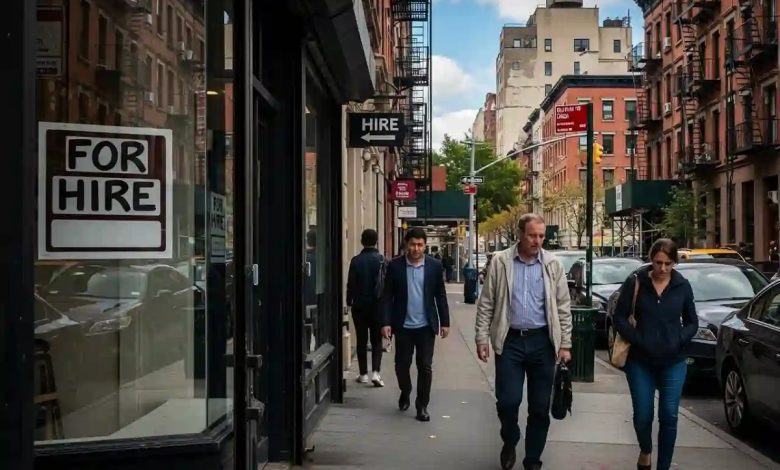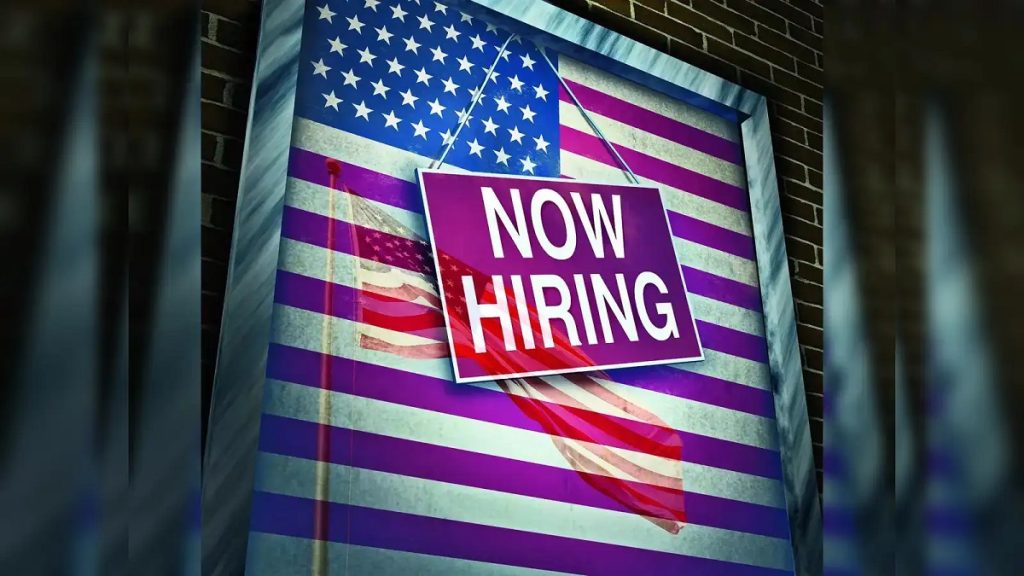New York City Job Growth Slows to Historic Low in 2025 Amid Economic Uncertainty
Private sector job creation in NYC nearly stalls in the first half of 2025, signaling the weakest expansion in decades outside of recessions.

Private sector job growth in New York City saw a troubling slowdown during the first half of 2025, with fewer than 1,000 new positions added—marking the slowest expansion outside of recession periods since 2003. This steep decline sharply contrasts with the strong hiring of previous years, raising concerns about the city’s economic health amid broader national labor market challenges.
The nation’s largest city added just 956 private sector jobs in the first six months of the year—a dramatic drop from the 66,000 new hires recorded over the same period last year. Key industries vital to NYC’s economy, including finance, insurance, hospitality, and retail, experienced job losses, pointing to a widespread slowdown.
Economists note that New York City’s economy has essentially stagnated this year, potentially signaling national trends. The broader U.S. labor market is also showing signs of weakness. Other major metropolitan areas, such as Los Angeles, San Francisco, and San Jose, have reported similarly slow job growth, with some seeing slight employment declines.

This sharp labor market slowdown follows last year’s rebound, when the local economy recovered from the pandemic and reached record employment levels. Now, the city’s job creation rate is the weakest since 2003—excluding the pandemic and the Great Recession.
Experts describe the situation as “shocking” given the absence of an official recession, but understandable given the current political and economic climate. Independent city budget offices forecast only about 31,900 new jobs this year—far below the roughly 100,000 jobs NYC generated annually before the pandemic. The lower projections are partly attributed to ongoing trade policies creating business uncertainty, as well as reduced expectations for tourism, particularly from key international markets.
Economists also point out that recent national economic policies have worsened the city’s slow and uneven pandemic recovery. This recovery has been marked by growth in both low-wage and high-wage jobs, with a widening gap between them. The combination of economic stagnation, rising rents, and stagnant incomes signals a critical turning point for residents and businesses.
City officials acknowledge the trend. Some stress the need for national partners to promote stability and push for policies that support economic growth. Others maintain an optimistic outlook, citing record overall job numbers and strong city revenues, while noting that NYC’s job trends remain in line with national patterns.
The city’s unemployment rate currently stands at 4.7%, above both state and national averages. The rate is especially high among certain demographic groups, particularly young workers. Business owners across the city report declining activity since March, alongside rising costs for goods and materials—often attributed to tariffs. As a result, many have scaled back hiring plans.
For example, a Lebanese restaurant owner in Manhattan initially expected revenue growth this year but now anticipates his first decline in 15 years, excluding the pandemic. He cites business uncertainty, higher costs from trade policies, and the loss of outdoor dining options. Construction costs for new projects have also surged, alongside supplier price hikes for various goods.
These concerns echo across the city’s hospitality sector. A recent survey of 300 establishments found most reported lower-than-expected sales in the last quarter, with half expressing pessimism about improvement in the third quarter. “Too few customers” was cited as the top concern, directly impacting hiring, as restaurants cannot afford extra payroll when revenues fall.

Meanwhile, NYC job seekers are increasingly worried about long-term unemployment. Many report applying to hundreds of jobs without receiving interview offers, pushing them to expand their search to remote roles or lower-skilled, lower-paying positions. The city’s Workforce1 Career Centers have seen a 10% increase in people seeking job search assistance, offering resume help, interview prep, training, and job referrals. Success stories, such as a migrant who found work as a cleaner, highlight the importance of these services.
The finance and insurance sectors—traditionally major economic drivers due to their high average wages—have also reversed course. After adding nearly 30,000 jobs right before the pandemic, they have lost 3,200 jobs this year, with large layoff announcements from major financial firms. Some economists point to the rise of artificial intelligence as a factor, as AI promises to streamline operations with fewer human resources.
Additionally, financial companies have been expanding outside NYC, especially in states like Florida and Texas. Business leaders note that post-pandemic workplace flexibility and attractive offers from other regions pose a real risk to New York, as these states actively court established industries.



